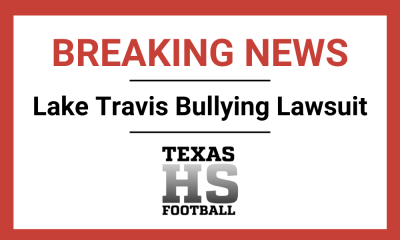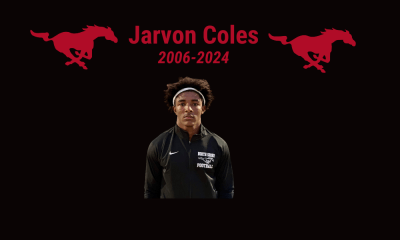Four new schools will take the gridiron in the fall, including three in the NCAA and one in the NAIA.
IRVING, Texas (July 23, 2015) – The National Football Foundation & College Hall of Fame (NFF) highlighted today that four new college football teams will take the field for the first time this season, increasing the number of schools among all NCAA divisions, the NAIA and independents offering football to 773, an all-time high.
Since 1978 when the NCAA changed its method for tracking attendance figures, the number of schools playing NCAA football (FBS, FCS, DII and DII) has steadily increased by 179 schools from 484 in 1978 to a record high of 663 in 2014, or an average increase of 4.9 schools per year. With the addition of the NAIA and independent schools playing football and the schools across all levels of play who have announced the addition of programs in the coming years, the number of colleges and universities now offering football has been increased to the all-time high 773. In the past four seasons alone (2011-14), 32 football programs have been added at NCAA, NAIA or independent institutions. All 773 schools will be represented on the helmet wall at the College Football Hall of Fame in Atlanta.

Numbers reflect schools playing football at all levels of the NCAA (FBS, FCS, DII and DII). Excludes NAIA and independents.
Universities and colleges are adding football at all levels, and administrators have developed sound plans, ensuring the new programs address the unique financial, academic and long-term objectives of their respective schools. The 61 institutions listed below, who have implemented firm plans during the past few years, coupled together with the more than 20 schools with exploratory committees, create a clear and undeniable trend that presidents and trustees nationwide see the value of a football program as part of their overall academic mission.
“No other sport contributes more to the vibrancy of a college campus than football, and we are very pleased to highlight those schools that have added our great game,” said NFF President & CEO Steve Hatchell. “University and college presidents clearly see the value of having programs on their campuses, and we applaud them for understanding the role football can play in the educational experience of all their students.”
The rationale for adding football varies at each institution, and all of the decision makers who helped develop a plan for launching a program explain that an in-depth study played a critical role in finding the right level of play and the proper financial balance. Small colleges may cite increasing enrollment and addressing gender imbalances while larger universities might highlight the role of football in raising the institution’s profile and its ability to attract research grants. All mention creating a more vibrant on-campus community and connecting with alumni.
“With more than one million high school students playing football and more than 70,000 spots on college teams, there is plenty of room for expansion,” said NFF Chairman Archie Manning. “Many of these colleges clearly recognize that football can play an important role in encouraging students to continue their educations by enticing them to enroll.”
The schools have added programs at all levels of play in every region of the country, experiencing successes that run the gamut. The University of Texas of the Permian Basin in Odessa, Texas, has successfully raised the $9.5 million it needed, and it will officially launch its football program in 2016 as a member of NCAA Division II’s Lone Star Conference. Morthland College in West Frankfort, Ill., hopes to begin play in the next two years, and it purchased land in January on which it plans to build a $500,000 football stadium and $7.5 million athletic field house.
Colorado State University-Pueblo won the 2014 NCAA Division II National Championship in just its seventh season since bringing back its football program in 2008 after a more than 20-year absence. In all, the 51 programs that have added football from 2008-14 have combined for 14 conference championships and 18 postseason appearances.
These are just some of the impressive achievements at schools that have recently added football. Others include notching impressive attendance figures; attracting increased enrollment; garnering national publicity; expanding their donor bases; and receiving invitations to join conferences at the next level.
This is not the first go around with football for some of the schools listed below. Avid fan and donor support helped reinstate football at the University of Alabama at Birmingham (UAB) just six months after the program had been shut down. UAB announced June 1 it plans to field a team again starting in 2017.
“I am so excited that UAB Football will return to FBS competition in 2017,” head football coach Bill Clark said in July. “We want a program that is here to stay. We have to start by building a new, stronger foundation. We need to take our time to do it right, then we can compete for conference and bowl championships.”
A couple of FCS schools adding football programs have received great support from some of college football’s biggest names. College Football Hall of Fame coach Phillip Fulmer has been an important consultant for East Tennessee State University in Johnson City, Tenn., which will return to the gridiron this fall for the first time since the 2003 season. The Buccaneers will play their first game on Sept. 3 against fellow start-up program Kennesaw State University in Kennesaw, Ga., which received key guidance from Hall of Fame coach Vince Dooley.
“It is an honor to be a part of Kennesaw State’s journey toward starting a football program,” Dooley said when the school announced the addition of its program in 2013. “Historically, football has defined the unique culture of an institution through its proud colors, mascot, songs, and traditions. In my experience, football provides a sense of pride and point of connection to a broad audience of supporters in the community and around the state.”
Well-thought-out plans have allowed both universities to move swiftly in fielding teams and both have received large financial and fan support. ETSU announced plans for a $26.6 million football stadium which will seat more than 10,000 fans. Meanwhile, Kennesaw State has surpassed 4,000 season ticket deposits, assuring it will play before a capacity crowd at every home game this fall. Both schools are extremely pleased with the early results and look forward to what football can do for their respective campuses this fall.
“Football is an American tradition,” said ETSU President Dr. Brian Noland. “It builds school spirit, it builds school pride, and it builds engagement – engagement with our students, with our community and with our alumni.”
ETSU will play as an FCS independent this season before joining the Southern Conference in 2016, while Kennesaw State will immediately join the Big South Conference. A lot of the schools’ early success can be traced to the experienced coaches put in place to build these football programs from scratch. ETSU’s Carl Torbush, a former head coach at Louisiana Tech and North Carolina, and Kennesaw State’s Brian Bohannon, a longtime coach with stints on the staffs at Georgia Tech and Navy, were both excited at the prospect and challenges of putting their marks on a football program.
“Most times, you’re changing a culture,” Bohannon told The Sports Network. “We get to create one here. I think that’s the most exciting thing about what we’re doing – how we want it to look, it’s all on us. Getting a start-up from ground zero, I’ve really enjoyed it.”
Increasing enrollment is almost always cited as one of the prime reasons for adding football programs, especially at much smaller colleges and universities. Both Finlandia University in Hancock, Mich., and Lyon College in Batesville, Ark., begin intercollegiate play this fall. Both schools see the addition of football as a great path to increasing their small enrollment numbers.
Beginning with football, Finlandia will be launching seven Division III athletic programs over the next seven years to increase its enrollment from its current student body of 485 students. The university hopes to bring in 217 additional student-athletes (44 percent increase) over those seven years, and football leads the way with a target of 70 new enrollees when the Lions take the field in September.
The 713-student Lyon College enrolled 72 students to restart its football program, which will take the field this fall for the first time since 1951. Athletics Director Kevin Jenkins believes football will not only increase enrollment, but it will also enhance community support and school spirit at the NAIA institution. The Scots have already made great strides in gaining public support, attracting 2,000 people to their scrimmages last fall, about 10 times more than anticipated.
“Our athletic program is expected to double in two years,” Jenkins told the Arkansas Democrat-Gazette. “It’s not just our football team; it’s the community’s team. It’s exciting, but it can be a challenge.”
The addition of a football program often entails a long, calculated process that frequently begins with studies conducted by task forces. Clarke University in Dubuque, Iowa, announced in January that it has begun the process of fielding a team for the 2018 season after a task force found football would not only increase enrollment at the 1,200-student university, but it would also increase vibrancy and school spirit. Specifically, football is expected to increase the male student population at Clarke, which transitioned to a coeducational institution in 1979 yet remains 70 percent female.
“This is an exciting opportunity for us; a challenge and exciting adventure that will move Clarke University forward,” said Clarke President Joanne Burrows. “Beginning football at a university founded by religious women may at first seem to be a daring decision, but the history of Clarke University – making the move to a coeducational institution, changing the name from college to university – is filled with similarly bold choices.”
Clarke’s task force studied other universities that have added football in recent years and found that each of them experienced a significant increase in enrollment. The NAIA has seen an especially large growth in football as 23 programs have either been added or announced since 2008. Clarke announced it will join the Heart of America Athletic Conference, and it is currently searching for a head coach to start recruiting in 2017.
“The time is right for football at Clarke University,” said Athletics Director Curt Long. “It will help foster a full college experience and further develop the campus atmosphere we are striving to create. Football will complement our existing athletic programs well and provide us with new scheduling opportunities through a new conference affiliation.”
Four Programs Launching in 2015
- East Tennessee State University (Johnson City, Tenn.): NCAA Division I Football Championship Subdivision, Independent (Subsequently joining Southern Conference in 2016) – President Brian Noland, Athletics Director Richard Sander, Head Coach Carl Torbush.
- Finlandia University (Hancock, Mich.): NCAA Division III, Independent – President Philip Johnson, Athletics Director Chris Salani, Head Coach Tim Driscoll.
- Kennesaw State University (Kennesaw, Ga.): NCAA Division I Football Championship Subdivision, Big South Conference – President Daniel S. Papp, Athletics Director Vaughn Williams, Head Coach Brain Bohannon.
- Lyon College (Batesville, Ark.): NAIA, Central States Football League – President Donald Weatherman, Athletics Director Kevin Jenkins, Head Coach Kirk Kelley.
Eight Programs Launching from 2016-18
(Listed chronologically and then alphabetically.)
- Cincinnati Christian University (Cincinnati, Ohio): NAIA, Conference TBA (2016) – President Ken Tracy, Athletics Director Beth Rogers, Head Coach David Fulcher.
- Davenport University (Grand Rapids, Mich.): NAIA, Conference TBA (2016) – President Richard J. Pappas, Athletics Director Paul Lowden, Head Coach Lou Esposito.
- Morthland College (West Frankfort, Ill.): Division TBA, Conference TBA (JV Schedule in 2015, full varsity schedule in 2016) – President Tim Morthland, Athletics Director and Head Coach Mike Rude.
- University of Texas of the Permian Basin (Odessa, Texas): NCAA Division II, Lone Star Conference (2016) – President W. David Watts, Athletics Director Steve Aicinena, Head Coach Justin Carrigan.
- University of West Florida (Pensacola, Fla.): NCAA Division II, Gulf South Conference (2016) – President Judith Bense, Athletics Director Dave Scott, Head Coach Pete Shinnick.
- University of Alabama at Birmingham (Birmingham, Ala.): NCAA Division I Football Bowl Subdivision, Conference USA (2017) – President Ray L. Watts, Athletics Director Mark Ingram, Head Coach Bill Clark.
- University of New England (Biddeford, Maine): NCAA Division III, Conference TBA (2017) – President Danielle N. Ripich, Athletics Director Jack McDonald, Head Coach TBA.
- Clarke University (Dubuque, Iowa): NAIA, Heart of America Athletic Conference (2018) – President Joanne Burrows, Athletics Director Curt Long, Head Coach TBA.
Six Programs Launched in 2014
- Arizona Christian University (Phoenix, Ariz.): NAIA, Central States Football League
- College of Idaho (Caldwell, Idaho): NAIA, Frontier Conference
- George Fox University (Newberg, Ore.): NCAA Division III, Northwest Conference
- Limestone College (Gaffney, S.C.): NCAA Division II, Independent
- Missouri Baptist University (Saint Louis, Mo.): NAIA, Mid-States Football Association
- Southeastern University (Lakeland, Fla.): NAIA, The Sun Conference
12 Programs Launched in 2013
- Alderson Broaddus University (Philippi, W.Va.): NCAA Division II, Independent
- Berry College (Mount Berry, Ga.): NCAA Division III, Southern Athletic Association
- Florida Tech (Melbourne, Fla.): NCAA Division II, Gulf South Conference
- Hendrix College (Conway, Ark.): NCAA Division III, Southern Athletic Association
- Houston Baptist University (Houston, Texas): NCAA Division I Football Championship Subdivision, Southland Conference
- Mercer University (Macon, Ga.): NCAA Division I Football Championship Subdivision, Southern Conference
- Oklahoma Baptist University (Shawnee, Okla.): NCAA Division II, Great American Conference
- Reinhardt University (Waleska, Ga.): NAIA, Mid-South Conference
- Southwestern University (Georgetown, Texas): NCAA Division III, Southern Collegiate Athletic Conference
- Stetson University (DeLand, Fla.): NCAA Division I Football Championship Subdivision, Pioneer Football League
- University of North Carolina at Charlotte (Charlotte, N.C.): NCAA Division I Football Bowl Subdivision, Conference USA
- Warner University (Lake Wales, Fla.): NAIA, The Sun Conference
Five Programs Launched in 2012
- Bluefield College (Bluefield, Va.): NAIA, Mid-South Conference
- Lindenwood University-Belleville (Belleville,Ill.): NAIA, Mid-States Football Association
- Misericordia University (Dallas, Pa.): NCAA Division III, Middle Atlantic Conferences
- Point University (West Point, Ga.): NAIA, The Sun Conference
- Wayland Baptist University (Plainview, Texas): NAIA, Central States Football League
Nine Programs Launched in 2011
- Ave Maria University (Ave Maria, Fla.): NAIA, The Sun Conference
- Concordia University Ann Arbor (Ann Arbor, Mich.): NAIA, Mid-States Football Association
- Ohio Mid-Western College (Sharonville, Ohio): Independent
- Presentation College (Aberdeen, S.D.): NAIA, North Star Athletic Association
- Robert Morris University (Chicago, Ill.): NAIA, Mid-States Football Association
- Siena Heights University (Adrian, Mich.): NAIA, Mid-States Football Association
- Stevenson University (Owings Mills, Md.): NCAA Division III, Middle Atlantic Conferences
- University of Texas at San Antonio (San Antonio, Texas): NCAA Division I Football Bowl Subdivision, Conference USA
- Virginia University of Lynchburg (Lynchburg, Va.): Independent
Six Programs Launched in 2010
- Georgia State University (Atlanta, Ga.): NCAA Division I Football Bowl Subdivision, Sun Belt Conference
- Lamar University (Beaumont, Texas): NCAA Division I Football Championship Subdivision, Southland Conference
- Lindsey Wilson College (Columbia, Ky.): NAIA, Mid-South Conference
- Notre Dame College (South Euclid, Ohio): NCAA Division II, Mountain East Conference
- Pacific University (Forest Grove, Ore.): NCAA Division III, Northwest Conference
- University of South Alabama (Mobile, Ala.): NCAA Division I Football Bowl Subdivision, Sun Belt Conference
Five Programs Launched in 2009
- Anna Maria College (Paxton, Mass.): NCAA Division III, Eastern Collegiate Football Conference
- Castleton State College (Castleton, Vt.): NCAA Division III, Eastern Collegiate Football Conference
- Old Dominion University (Norfolk, Va.): NCAA Division I Football Bowl Subdivision, Conference USA
- University of New Haven (West Haven, Conn.): NCAA Division II, Northeast-10 Conference
- University of the Incarnate Word (San Antonio, Texas): NCAA Division I Football Championship Subdivision, Southland Conference
Eight Programs Launched in 2008
- Campbell University (Buies Creek, N.C.): NCAA Division I Football Championship Subdivision, Pioneer Football League
- College of St. Scholastica (Duluth, Minn.): NCAA Division III, Upper Midwest Athletic Conference
- Colorado State University–Pueblo (Pueblo, Colo.): NCAA Division II, Rocky Mountain Athletic Conference
- Dordt College (Sioux Center, Iowa): NAIA, Great Plains Athletic Conference
- Grand View University (Des Moines, Iowa): NAIA, Heart of America Athletic Conference
- Kentucky Christian University (Grayson, Ky.): NAIA, Mid-South Conference
- Lake Erie College (Painesville, Ohio): NCAA Division II, Great Lakes Intercollegiate Athletic Conference
- The Lincoln University (Lincoln University, Pa.): NCAA Division II, Central Intercollegiate Athletic Association

Four new college football teams will take the field for the first time this fall: East Tennessee State University, Kennesaw State University, Finlandia University (Mich.) and Lyon College (Ark.). The addition of the four schools, plus the eight who plan to add programs in the next three years, increases the number of schools among all NCAA divisions, the NAIA and independents offering football to 773, an all-time high.



















